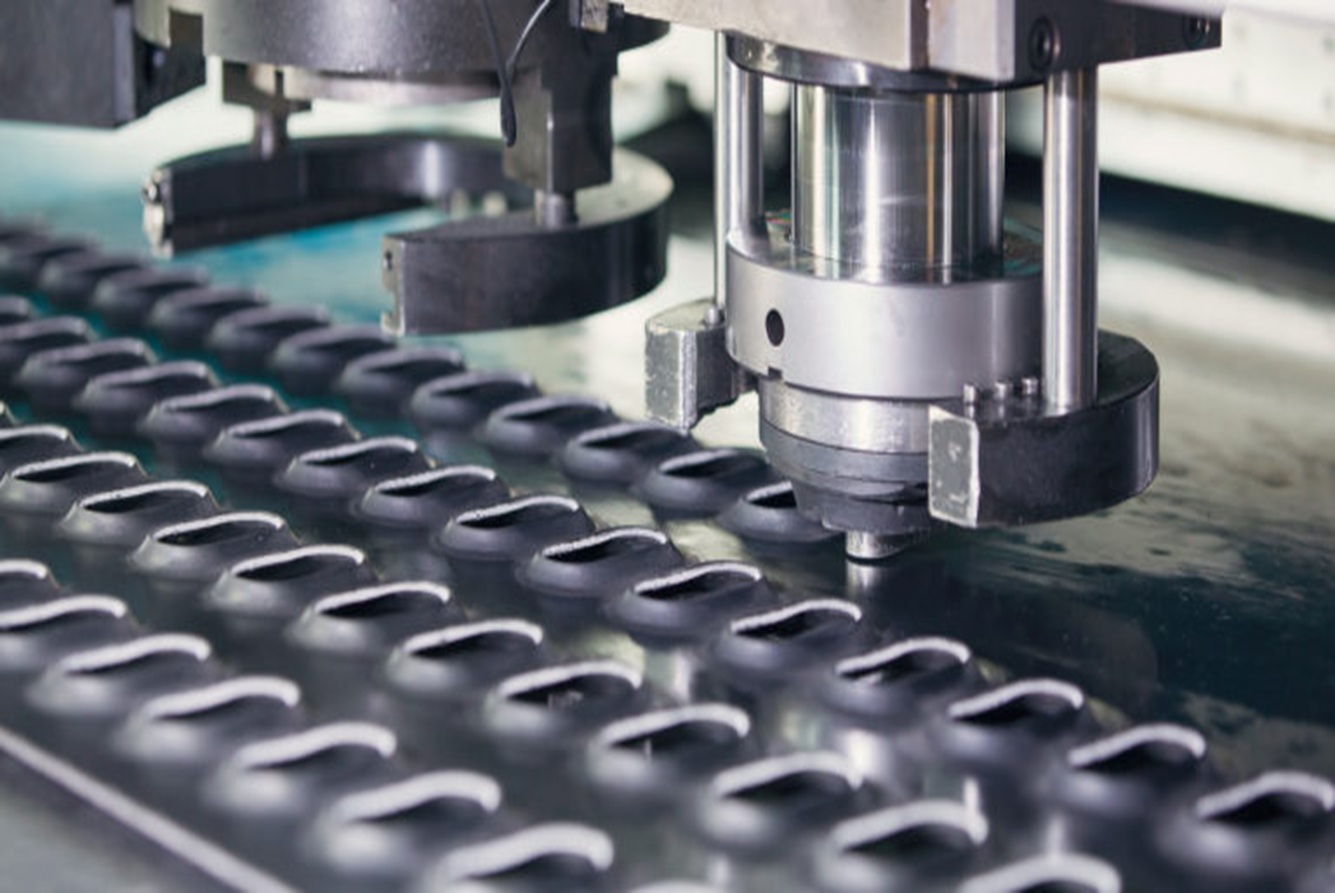

While metal cutting, sawing, and bending are often discussed, sheet metal punch holes are often overlooked. Whether it is perforated sheets or well-planned holes in the sheet metal for assembly, have you ever wondered how they are created? In the world of metalworking, creating holes in metal sheets is a crucial task, useful for countless applications. One of the most effective ways to achieve clean, accurate holes is through metal hole punching.
This method is called metal punching and uses manual punches, hydraulic metal punching machines, and even CNC metal hole punches.
If you wish to know more about metal punching, read this blog. It discusses the industrial metal hole punch and its process in detail.
Read on!
An industrial metal hole punch is a powerful tool used to create holes in metal sheets, tubes, and pipes with speed and accuracy. A metal punch tool shears the material, leaving a cleaner edge and leading to faster production time. Metal-dependent companies engage in large-scale operations, thus relying on industrial metal hole punches to carve multiple holes in quick succession while maintaining consistency.
The following different types of metal punching tools are used in various industries depending upon the needs:
A hand-held metal punch is a portable, manually-operated tool used for small-scale jobs. These are crucial for on-site repairs, low-volume tasks, or for hard-to-reach areas.
A hydraulic punching machine uses hydraulic pressure to separate metal from the sheet. Its immense force allows it to cut through thicker and harder metals with ease, making it suitable for industrial operations. They are usually preferred for heavy-duty applications, large production runs, and when consistent hole quality is critical.
Mechanical punches rely on mechanical force, while pneumatic punches use compressed air for power.
The sheet metal is kept between the punch and die. It is advised to use a scriber to mark the position of the hole.
When the force is applied, the punch pushes through the metal, cutting a clean hole. The die supports the material during the punch, ensuring the edges remain smooth and reducing distortion.
The scrap metal is then collected beneath the die for recycling.
The various applications of metal hole punching are mentioned below:
It is not an exclusive list, as sheet metal punch holes have uses in other industries as well.
Consider the following factors when choosing a metal hole punch:
Material Type and Thickness: Select a tool that aligns with your needs. Check the material thickness and type before every operation to choose the right metal hole punch.
Hole Size and Shape: What is the desired shape and size of holes for your operation? Choose a punching machine that accommodates your specific needs.
Production Volume: For DIY operations, a manual punch is sufficient, but for high-volume production, a more automated solution is required. A hydraulic press or a pneumatic punching machine should be used.
Portability Needs: If you work on-site frequently, invest in a hand-held manual punch.
Budget and Maintenance: Choose a machine that fits your budget. Consider long-term upkeep too.
Metal punching can be dangerous if proper safety measures are not followed. Check out the following safety measures that you must always adhere to during metal punching:
A properly kept punching tool will perform efficiently for years. Here are some maintenance tips to keep the machine in good shape:
The small holes in metal sheets have varied uses, be it for assembly or to manufacture perforated sheets. Different industries have distinct uses of industrial metal hole punches, but one thing is common- they seek top-quality metal hole punching. It is essential to reduce material waste and the need for rework.
Quality metal hole punching requires experience, skill, and the right tools. At New Mexico Metals LLC, we have experience, and we rely on the GEKA Bendicrop 60S Universal Ironworker. In addition, we offer metal drilling, sawing, cutting, bending, shearing, and other metalworking services.
Contact us to learn more about our offerings!
Que: What is the difference between a hand-held metal punch and a hydraulic metal punch?
Ans: A hand-held metal punch is a small portable tool more suitable for smaller operations. A hydraulic machine is used for industrial, heavy-duty jobs.
Que: Can a metal hole punch work on stainless steel?
Ans: Yes, with a high-strength punch and die set, you can punch through stainless steel’s hardness.
Que: What is a sheet metal punch hole used for?
Ans: It is used for creating precise holes in metal sheets for assembly, ventilation, or decorative purposes.
Que: Are all metal punch tools the same size?
Ans: No. Tools differ in terms of size, capacity, hole diameter, etc.
Que: How do I maintain my industrial metal hole punch?
Ans: By lubricating moving parts, keeping the machine clean, and replacing worn parts on time, the punching tool can be kept as good as new.